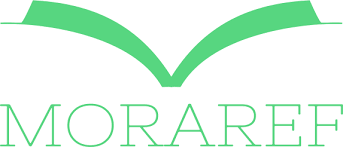ILLOCUTIONARY SPEECH ACTS ANALYSIS IN TOM CRUISE'S INTERVIEW
Abstract
This study is an analysis of illocutionary speech acts performed in Tom Cruise's interview in promoting his movie. This study aims to describe the types as well as the functions of illocutionary speech acts performed by both the interviewer and the interviewee. Moreover, this study also describes the most and the least used illocutionary speech acts performed in the interview. This study uses qualitative method employing descriptive analysis design. The data source of this study is collected by downloading the video of the interview from YouTube. The data are observed and transcribed into written form. Furthermore, the data are categorized into some types of illocutionary speech acts. The result showed that there are four kinds of illocutionary speech acts which are performed in Tom Cruise's interview which are representative, commissive, directive, and expressive. Here, the representative speech acts was categorized as the most performed speech in that interview. The result of the present study showed that Tom Cruise tended to convey his utterance to give statements of fact or to describe things that he believed to be true. Meanwhile, the percentage of the most performed or the most used speech acts to the least one in Tom Cruise's interview is: representative (48.7%), expressive (38.5%), commissive (7.7%), directive (5.1%), and declarative (0%).
Keywords
Full Text:
PDFReferences
Altikriti, S. (2016). Persuasive speech acts in Barack Obama's inaugural speeches (2009, 2013) and the last state of the union address. International Journal of Linguistics, 8(2), 47-66.
Azhari, A. S. (2018). Speech acts of classroom interaction. International journal of linguistics, literature and culture, 4(2), 24-45.
Barron, A. (2017). The speech act of "offers" in Irish English. World Englishes, 36(2), 224-238.
Budiasih, L. T., Andayani, A., & Rohmadi, M. (2017). Illocution in speech acts by foreign students in Indonesian as a foreign language classes. IJOLTL: Indonesian Journal of Language Teaching and Linguistics, 2(3), 213-226.
Corredor, C. (2018). Deliberative dialogues: Deontic turn-taking and illocutionary acts. Linguistics and Literature Studies, 6 (2), 99-106.
Cutting, J. (2002). Pragmatics and discourse. London: Routledge.
Dewi, A. A. P. R., Rajeg, I. M., & Netra, I. M. (2016). Commissive and expressive illocutionary acts and their intended meanings in steel’s the cottage. Humanis.
Domaneschi, F., Passarelli, M., & Chiorri, C. (2017). Facial expressions and speech acts: experimental evidences on the role of the upper face as an illocutionary force indicating device in language comprehension. Cognitive processing, 18(3), 285-306.
Dylgjeri, A. (2017). Analysis of speech acts in political speeches. European Journal of Social Sciences Studies.
Goodwin, J. (2014). Conceptions of speech acts in the theory and practice of argumentation: a case study of a debate about advocating. Studies in Logic, Grammar and Rhetoric. 79-93.
Green, M. (2016). Speech acts: An annotated bibliography. URL: https://www. academia. edu/7841094/Speech_Acts_Annotated_Bibliography_from_Oxford.
Grundlingh, L. (2018). Memes as speech acts. Social Semiotics, 28(2), 147-168.
Handayani, N. V. (2015). The use of expressive speech acts in hannah montana session 1. REGISTER, 8 (1). 99-112.
Hashempour, Z. (2016). A study on Iranian funeral posters: speech acts analysis. Journal of Language Teaching and Research, 7 (5). 946-952.
Hashim, S. S. M. (2015). Speech acts in political speeches. Journal of Modern Education Review, 5(7), 699-706.
Hashim, S. S. M. (2016). Speech acts in selected political speeches. International Journal of Humanities and Cultural Studies (IJHCS) ISSN 2356-5926, 2(3), 396-406.
Ilić, B. M., & Radulović, M. (2015). Commissive and expressive illocutionary acts in political discourse. Lodz Papers in Pragmatics, 11(1), 19-49.
John, P., Brooks, B., & Schriever, U. (2019). Speech acts in professional maritime discourse: A pragmatic risk analysis of bridge team communication directives and commissives in full-mission simulation. Journal of Pragmatics, 140, 12-21.
Kim, H., & Lee, H. (2015). Speech act analysis of the English section of College Scholastic Ability Test: With focus on conversational listening material.
Kiuk, P. Y., & Ghozali, I. (2018). Speech acts analysis in Desmond's conversation in “hacksaw ridge†movie. Journal of English Language and Language Teaching (JELLT), 2(1), 59-72.
Koutchadé, I. S. (2017). Analysing speech acts in Buhari’s address at the 71st session of the un general assembly. International Journal of Applied Linguistics and English Literature, 6(3), 226-233.
Kravchenko, N. (2017). Illocution of direct speech acts via conventional implicature and semantic presupposition. Lege Artis, 2(1), 128-168.
Levinson, S. C. (2017). Speech acts. In Oxford handbook of pragmatics (pp. 199-216). Oxford University Press.
Marzuki, A. G. (2019). Utilizing recorded English dialogues in teaching English word stress to islamic higher education students in Indonesia. Jurnal Pendidikan Islam, 5(1), 53-64.
Marzuki, A.G. (2016). Utilizing cooperative learning in islamic college students' classroom, IJEE (Indonesian Journal of English Education), 3(2), 123-139.
Marzuki, A.G. (2017). Developing speaking skill through oral report in an efl class in indonesia, Al-Ta'lim Journal, 24(3), 243-254.
Mey, J. L. (2001). Pragmatics: An introduction. UK: Blackwell Publishing.
Mufiah, N. S., & Rahman, M. Y. N. (2019). Speech acts analysis of Donald Trump's speech. PROJECT (Professional Journal of English Education), 1(2), 125-132.
Nadeak, M. F., Sunggingwati, D., & Valiantien, N. M. (2017). An analysis of illocutionary act and perlocutionary act of judy hopps'utterances in zootopia movie (2016). Ilmu Budaya: Jurnal Bahasa, Sastra, Seni dan Budaya, 1(4), 305-316.
Norrick, N. R. (2015). Narrative illocutionary acts direct and indirect. Journal of Pragmatics, 86, 94-99.
Nurhasana, L. (2017). A speech act analysis of utterances in the disney animation movie script “inside out†by pete docter and ronnie del carmen (Doctoral dissertation, IAIN Syekh Nurjati Cirebon).
Nurhayati, D. A. W., & Yuwartatik, Y. (2016). Illocutionary and perlocutionary acts on main characters dialogues in john milne's novel:“the black catâ€. IJOLTL: Indonesian Journal of Language Teaching and Linguistics, 1(1), 67-96.
Ogleznev, V. (2016). Ascriptive speech act and legal language. In SHS Web of Conferences (Vol. 28).
Okoro, C. N. (2017). A speech act analysis of the formal declaration of interest for presidency and inaugural speeches of President Muhammadu Buhari. Language in India, 17(10), 49-66.
Oloo, N. O., Ochieng, R. O., & Rew, F. O. (2019). A pragmatic analysis of speech acts in margaret ogola's the river and the source and i swear by apollo. Unpublished PhD Thesis. Jaramogi Oginga Odinga University of Science and Technology.
Peneva, D. (2018). Modality markers in the speech acts of assurance in english and Bulgarian spoken discourse. Knowledge International Journal, 22(6), 1529-1534.
Petrey, S. (2016). Speech acts and literary theory. New York: Routledge.
Rafli, Z. (2018). English speech acts of illocutionary force in class interaction. Advances in Language and Literary Studies, 9(3), 113-120.
Ramayanti, D., & Marlina, L. (2018). The analysis of types illocutionary acts in “tangled†movie. E-Journal English Language and Literature, 7(1), 14-23
Richetti, P. H. P., de AR Gonçalves, J. C., Baião, F. A., & Santoro, F. M. (2017). Analysis of knowledge-intensive processes focused on the communication perspective. In International Conference on Business Process Management (pp. 269-285). Springer, Cham.
Sameer, I. H. (2017). The analysis of speech acts patterns in two Egyptian inaugural speeches. Studies in English Language and Education, 4(2), 134-147.
Simon, S., & Dejica-Cartis, D. (2015). Speech acts in written advertisements: identification, classification and analysis. Procedia-Social and Behavioral Sciences, 192(24), 234-239.
Sobola, E. (2018). An analysis of illocutionary force of metaphor of abuse in a Bollywood movie-house of trouble. EKSU Studies in Language and Literature (ESILL), 6, 104-111.
Soleimani, H., & Yeganeh, M. N. (2016). An analysis of pragmatic competence in 2013 presidential election candidates of Iran: A comparison of speech acts with the poll outcomes. Theory and Practice in Language Studies, 6(4), 706-715.
Srikandi, C. N. (2020). An analysis of the illocutionary acts on Donald Trump's presidential candidacy speech. Globish: An English-Indonesian Journal for English, Education, and Culture, 9(1), 114-123
Suhirman, L. (2016). Speech acts in psycholinguistics class setting in postgraduate program. IJOLTL: Indonesian Journal of Language Teaching and Linguistics, 1(1), 19-36.
Weigand, E. (2016). The dialogic principle revisited: Speech acts and mental states. In Interdisciplinary Studies in Pragmatics, Culture and Society (pp. 209-232). Springer, Cham.
Witek, M. (2015). Mechanisms of illocutionary games. Language & Communication, 42, 11-22.
Woods, R. (2016). Investigating the syntax of speech acts: Embedding illocutionary force (Doctoral dissertation, University of York).
Yule, G. (1996). Pragmatics. Oxford: Oxford University Press.
DOI: http://dx.doi.org/10.33603/perspective.v8i1.3304
Refbacks
- There are currently no refbacks.

This work is licensed under a Creative Commons Attribution-ShareAlike 4.0 International License.

.png)








